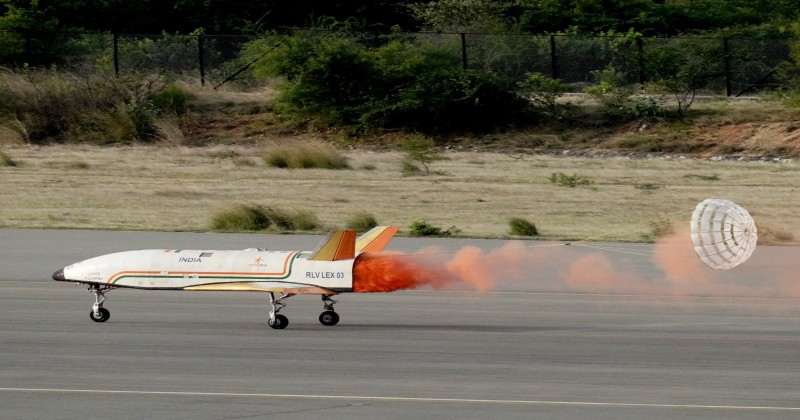
The Indian Space Research Organisation (ISRO) successfully completed its third and final Reusable Launch Vehicle (RLV) Landing Experiment (LEX) on Sunday. Named RLV LEX-03, the mission took place at the Aeronautical Test Range (ATR) in Chitradurga, Karnataka. This experiment, conducted under challenging release conditions and strong winds, demonstrated the RLV’s autonomous landing capabilities. The winged vehicle, Pushpak, was deployed from an Indian Air Force Chinook helicopter at a height of 4.5 kilometers and executed precise cross-range correction maneuvers before achieving a horizontal landing at the runway centerline.
The RLV LEX-03 mission simulated the approach and landing conditions for a vehicle returning from space, reinforcing ISRO’s proficiency in critical technologies for developing a Reusable Launch Vehicle (RLV). ISRO’s statement highlighted the validation of an advanced guidance algorithm crucial for correcting errors in both longitudinal and lateral planes, which is essential for future Orbital Re-entry Missions. This mission reused the winged body and flying systems from the LEX-02 mission, showcasing ISRO’s capability to repurpose flight components across multiple missions. The collaboration involved the Indian Air Force, several ISRO centers, and other organizations.
ISRO Chairman S Somanath praised the team for their ongoing success in managing such significant missions. Dr. S. Unnikrishnan Nair, Director of the Vikram Sarabhai Space Centre (VSSC), expressed that this continued success bolsters ISRO’s confidence in the critical technologies necessary for upcoming orbital re-entry missions.

Post Your Comments